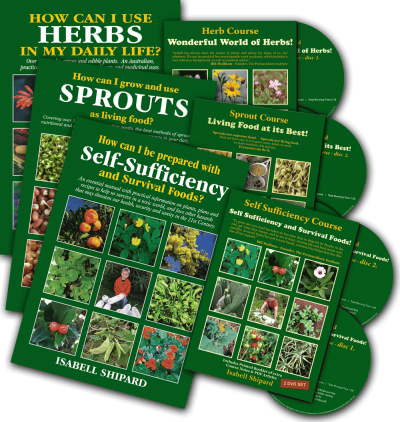Ceylon Spinach, Malabar Spinach, Malabar Nightshade
Basella alba F. Basellaceae
Description
Perrenial, soft-stemmed sprawler, which will climb if given something for support. Lush-green, heart-shaped leaves, to 20cm in length, form alternately along the stem. Small, sessile, bisexual flowers consist of four white/pink fleshy petals. Round, brown seeds set within a soft, fleshy, dark-purple casing, with purple sap, that looks like a small, round berry.
… … omitted text, please see How can I use HERBS in my daily life? for full text.

Medicinal Uses
The plant is a rich source of chlorophyll, a valuable blood building component, which also provides favourable intestinal flora, digestive enzymes, and stimulation of secretions of the stomach, liver and pancreas. The mucilaginous leaves are valued for removing mucus and toxins from the body. It is an ideal greens to use in the tropical climates and hot summer, as its high water content is cooling to the body and has the effect of clearing the complexion and dealing with fluid retention. In Sri Lanka it is one of the basic herbal medicines given for insomnia and nervous breakdown. Leaves are used as a poultice on the forehead to relieve headaches, and bandaged over ulcers and eczema. The species Basella rubra, with red stems and red/green leaves has been a folk medicine for cancer treatment.
Culinary Uses
Leaves can be picked by nipping off individually or tips of stems with leaves can be cut. Pick as required for each meal for optimum freshness. Cut leaves and stems do keep well if wrapped in plastic and placed in refrigerator crisper. Young, small tip leaves are tasty in salads, tucked into sandwiches, used as a garnish, or served with a dip (using the leaves like cracker biscuits). Fresh, young leaves have a varying taste to different people; some people say they taste like fresh garden peas, others say like sweetcorn, fresh beans or lettuce.
Large, mature leaves have a stronger flavour, more like spinach, no doubt because of their rich iron and chlorophyll content. Large leaves can be lightly steamed, sliced and tossed in stir-fries, added to quiche, soups, casseroles, and mixed with vegetable dishes. Leaves infused in boiling water are drunk as a tea.
Tender tips of stems are lightly steamed, resembling asparagus in flavour. Flowers can be eaten. The juicy, purple berries can be used to colour jellies, sweets, drinks and for face painting. The addition of a little lemon juice makes the dye more effective. A quick tasty meal can be prepared by dicing a handful of leaves for each serve and lightly steam in a little water until just limp (but still a nice green colour). Whisk in 1-2 beaten eggs for each serve and gently cook until the egg has set. Serve on toast.
The plant is an excellent survival food.


